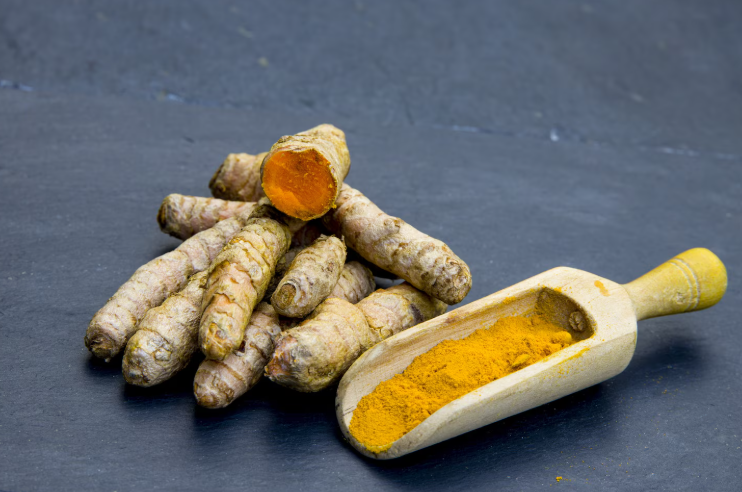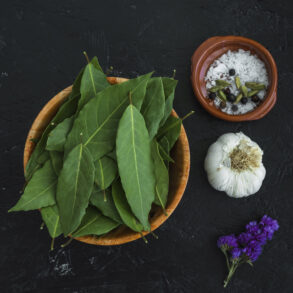Long before laboratories began testing antioxidants and anti-inflammatory compounds, an ancient golden spice was already being used in homes and temples across Asia. It was used to calm irritation, brighten the complexion, and prepare brides for their wedding day. That spice is turmeric, the brilliant yellow rhizome of Curcuma longa.
Today modern dermatology is validating what traditional healers knew intuitively: turmeric contains a suite of bioactive molecules. They protect skin cells, reduce inflammation, and regulate pigment production. This intersection between traditional beauty rituals and laboratory research is what we call Turmeric in Skincare Science. It is the evidence-based understanding of how turmeric functions as a natural cosmetic powerhouse.
1. The Chemistry Behind Turmeric’s Glow
To understand Turmeric in Skincare Science, we must first explore its chemistry. Turmeric’s most famous compound, curcumin, is a polyphenol responsible for its deep golden color and much of its biological activity. Yet curcumin is only one of more than a hundred active constituents found in the rhizome.
Key Compounds
| Compound | Scientific Role in Skin Health |
|---|---|
| Curcumin | Potent antioxidant and anti-inflammatory; inhibits inflammatory pathways (NF-κB, COX-2). |
| Demethoxycurcumin & Bisdemethoxycurcumin | Support collagen production and wound repair. |
| Turmerones (in turmeric essential oil) | Enhance skin permeability and absorption of nutrients. |
| Polysaccharides | Provide hydration and barrier protection. |
Together these compounds explain why Turmeric in Skincare Science is more than a folk remedy—it is a field supported by biochemistry and pharmacology.
2. Traditional Roots: Ayurveda and Modern Research
In Ayurveda, turmeric is revered as Haridra, meaning “the one that improves color.” It is classified as Kandughna (anti-itch), Varnya (enhancer of complexion), and Krimighna (antimicrobial). Formulations such as Ubtan—a paste of turmeric, chickpea flour, sandalwood, and rose water—have been used for centuries to purify and brighten skin.
Modern Turmeric in Skincare Science echoes these uses. Laboratory tests show that turmeric extracts reduce sebum oxidation (a key factor in acne), inhibit bacterial growth, and limit melanin synthesis. This harmony between ancient texts and empirical science makes turmeric one of the rare ingredients respected by both herbalists and dermatologists.
3. Antioxidant Power: Saving the Skin from Free Radicals
Every day the skin faces oxidative stress from sunlight, pollution, and metabolic activity. Free radicals—unstable oxygen molecules—damage proteins, lipids, and DNA, leading to premature ageing.
Curcumin neutralizes these radicals by donating electrons and chelating metal ions such as iron and copper, which catalyze oxidative reactions. In controlled studies, topical turmeric reduced UV-induced oxidative damage and preserved collagen fibers, confirming the antioxidant mechanism central to Turmeric in Skincare Science.
Practical Insight
Using turmeric-infused creams or masks two to three times weekly can enhance the skin’s natural defense system, especially when combined with vitamin E or botanical oils.
4. Anti-Inflammatory Mechanisms: Calming the Skin from the Inside
Inflammation is a major driver of skin issues—from acne to eczema. Turmeric in Skincare Science identifies curcumin as a natural modulator of inflammatory mediators. It down-regulates enzymes like cyclooxygenase (COX-2) and lipoxygenase (LOX) and suppresses pro-inflammatory cytokines (IL-1β, TNF-α).
Why This Matters
- Acne & Redness: Reduced cytokine activity lowers swelling and discomfort.
- Eczema & Sensitivity: Curcumin’s soothing effect improves barrier recovery.
- Post-Procedure Care: Formulations with turmeric oil help shorten redness after exfoliation or peels.
Because curcumin acts gently, it offers a botanical alternative for those seeking calmer skin without synthetic corticosteroids.
5. Brightening and Pigment Regulation
Uneven tone, sun spots, and dullness often result from excess melanin production triggered by UV exposure or inflammation. Turmeric inhibits the enzyme tyrosinase, which catalyzes melanin synthesis. Clinical tests have shown measurable reductions in hyperpigmentation after consistent topical use.
This is why brightening serums now feature encapsulated curcumin nanoparticles—enhancing stability and penetration. Such advances bridge traditional remedies with modern delivery systems, embodying the innovation within Turmeric in Skincare Science.
6. Turmeric for Acne-Prone Skin
Bacterial overgrowth and inflammation are the twin culprits of acne. Turmeric addresses both:
- Antimicrobial action: Curcumin inhibits Propionibacterium acnes and Staphylococcus epidermidis.
- Sebum control: It helps regulate lipid oxidation and reduces clogged pores.
- Healing support: Its antioxidant properties accelerate tissue repair after breakouts.
Ayurvedic formulations like Haridra Khanda and turmeric pastes mixed with neem or sandalwood have long targeted these symptoms, and now research confirms their efficacy. Thus, Turmeric in Skincare Science provides a natural framework for managing acne without harsh chemicals.
7. Anti-Ageing Effects: The Art of Youthful Glow
Wrinkles and sagging skin stem from collagen degradation and reduced elasticity. Turmeric helps slow these processes by:
- Inhibiting matrix metalloproteinases (MMP-2, MMP-9) that break down collagen.
- Promoting fibroblast proliferation, encouraging new collagen synthesis.
- Protecting telomeres (chromosome ends) from oxidative shortening.
Regular use of turmeric oil or serums has been shown to improve skin texture and firmness. This is one of the most exciting aspects of Turmeric in Skincare Science, where molecular biology supports ancient beauty secrets.
8. Wound Healing and Barrier Repair
Turmeric has been used traditionally on cuts and burns for its antiseptic effect. Scientific evaluations show that curcumin accelerates wound contraction, enhances granulation tissue formation, and promotes angiogenesis (formation of new blood vessels).
For skincare, this means faster recovery from irritation, sunburn, or exfoliation. Barrier lipids like ceramides are preserved, helping the skin retain moisture—a core theme of Turmeric in Skincare Science.
9. Delivery Challenges and Modern Solutions
While curcumin is powerful, it’s poorly soluble in water and can degrade under light. Scientists have tackled this by developing advanced delivery systems:
- Nanocurcumin: nano-sized particles increase penetration and stability.
- Liposomal and phospholipid complexes: enhance absorption through the epidermis.
- Hydrogel and micellar formulations: allow slow, sustained release for sensitive skin.
These innovations ensure the benefits of Turmeric in Skincare Science reach deeper layers safely, without staining or irritation.
10. DIY Applications Backed by Science
Home remedies continue to be popular, but science helps refine them for safety and effectiveness.
1. Turmeric and Yogurt Brightening Mask
Mix ½ teaspoon turmeric powder with 2 tablespoons yogurt and a drop of honey. Apply for 10 minutes.
- Scientific basis: Lactic acid aids exfoliation; turmeric provides antioxidants.
2. Turmeric and Aloe Vera Gel
Blend fresh aloe gel with a pinch of turmeric. Refrigerate and apply to sun-exposed areas.
- Mechanism: Aloe’s polysaccharides hydrate; curcumin reduces UV-induced inflammation.
3. Turmeric Oil Massage
Infuse turmeric powder in sesame or jojoba oil. Warm slightly and massage gently.
- Effect: Improves microcirculation and supports lipid barrier.
Such combinations show how traditional practices align with the evidence compiled under Turmeric in Skincare Science.
11. Safety Considerations
Turmeric is generally safe, yet concentration and purity matter. Overuse of raw powder may cause temporary yellow staining or irritation in sensitive individuals. Key safety tips:
- Always patch-test before applying new preparations.
- Use cosmetic-grade turmeric or standardized extracts.
- Avoid mixing with strong acids or alcohol-based products.
Research also indicates that curcumin’s systemic absorption is low through the skin, so topical use is safe when formulated correctly—a reassuring fact for practitioners of Turmeric in Skincare Science.
12. Formulation Trends in the Cosmetic Industry
Global skincare brands are embracing turmeric for its dual appeal: tradition and science.
- Cleansers & Toners: contain low doses of curcumin for daily antioxidant protection.
- Serums: use nano-encapsulated turmeric to target pigmentation.
- Masks & Scrubs: pair turmeric with clay or vitamin C for radiance.
- SPF Products: exploit its UV-protective synergy with zinc oxide.
These innovations show how Turmeric in Skincare Science fuels the “green-tech” revolution combining nature’s intelligence with modern chemistry.
13. Turmeric and the Skin Microbiome
Recent research reveals that skin hosts trillions of beneficial microbes forming a protective barrier against pathogens and inflammation. Disrupting this balance leads to acne, eczema, and dullness.
Turmeric in Skincare Science shows that curcumin supports microbial harmony by inhibiting harmful bacteria while sparing the beneficial species. Studies demonstrate that turmeric extracts prevent Staphylococcus aureus overgrowth—common in eczema—without sterilizing the skin surface.
This selective antimicrobial property positions turmeric as a natural prebiotic for the skin, encouraging a balanced ecosystem that promotes healthy pH and clear pores.
14. The Gut-Skin Axis and Turmeric’s Role
The relationship between digestion and skin is inseparable, as explored in Ayurvedic and modern science alike. Turmeric bridges this gut-skin connection beautifully.
When taken internally—through food or supplements—curcumin modulates gut inflammation, enhances liver detoxification, and improves bile secretion. This reduces systemic toxins that can manifest as acne, rashes, or dull skin.
In the context of Turmeric in Skincare Science, this means turmeric operates from both sides:
- Internally, by improving digestion and reducing inflammation.
- Externally, by protecting and repairing the skin barrier.
This holistic dual action makes turmeric an unmatched botanical ally for comprehensive skincare.
15. Photoprotection: Natural Defense Against Sun Damage
UV radiation is one of the main culprits behind premature ageing. Turmeric in Skincare Science demonstrates that curcumin and its derivatives absorb UVB light and neutralize free radicals generated by sun exposure.
Animal and human studies show reduced erythema (redness) and lower lipid peroxidation levels after applying turmeric-based creams. When used alongside conventional sunscreen, turmeric enhances UV protection without causing sensitivity.
This natural “bio-shield” effect underlines turmeric’s unique position as both an antioxidant and a photoprotective agent.
16. Turmeric in Dermatological Research and Clinical Trials
The field of Turmeric in Skincare Science is supported by growing clinical evidence.
- Acne: A 2016 study in Phytotherapy Research found that curcumin gel reduced acne lesions by 50% within eight weeks, comparable to benzoyl peroxide but without irritation.
- Psoriasis: Topical turmeric improved scaling and redness scores in chronic plaque psoriasis.
- Wound Healing: Trials show faster epithelialization and reduced scarring.
- Photoaging: Curcumin-based nanoemulsions increased skin elasticity and hydration after 30 days.
These controlled studies elevate turmeric from folk remedy to evidence-based skincare ingredient.
17. Bioavailability: Making Turmeric Work Better
A recurring challenge in Turmeric in Skincare Science is curcumin’s low bioavailability—it degrades quickly and penetrates poorly through the stratum corneum. Scientists have developed multiple strategies to overcome this:
- Nanoparticle Encapsulation: Boosts absorption up to 20 times.
- Combination with Piperine: The black pepper extract piperine increases curcumin uptake by 2000% when taken orally.
- Liposomal Delivery: Fat-based vesicles enhance topical penetration.
- Solid Lipid Nanocarriers (SLNs): Provide sustained release and stability.
Such innovations are transforming turmeric from a kitchen spice into a sophisticated dermatological ingredient.
18. Combining Turmeric with Complementary Botanicals
In both Ayurveda and modern product design, turmeric rarely acts alone. Its synergy with other natural compounds amplifies results and balances potential irritation.
| Partner Ingredient | Combined Effect | Scientific Insight |
|---|---|---|
| Aloe Vera | Calms and hydrates | Reduces redness and enhances absorption |
| Licorice Root | Boosts brightening | Dual inhibition of tyrosinase |
| Green Tea Extract | Antioxidant synergy | Curcumin + catechins enhance photoprotection |
| Niacinamide | Barrier support | Complements curcumin in improving elasticity |
| Vitamin C | Enhanced radiance | Dual action against pigmentation and oxidative stress |
These pairings highlight how Turmeric in Skincare Science integrates seamlessly into both natural and cosmeceutical formulations.
19. Lifestyle Integration: Living the Turmeric Way
Science may analyze molecules, but radiant skin depends on lifestyle. Incorporating turmeric into daily rituals supports inner and outer health.
1. Diet
Add turmeric to soups, teas, and vegetables with a pinch of black pepper to aid absorption. Internal detoxification enhances external glow.
2. Topical Care
Use turmeric-infused oils or serums weekly to maintain tone and resilience. Consistency is key—results compound over time.
3. Stress Management
Curcumin lowers cortisol levels and oxidative stress, protecting collagen from breakdown.
4. Sleep
Adequate rest allows the skin’s natural repair cycle to sync with turmeric’s antioxidant benefits, reflecting the holistic approach within Turmeric in Skincare Science.
20. Environmental and Ethical Impact
The rise of turmeric-based skincare aligns with eco-conscious values. Turmeric cultivation requires minimal pesticides and supports small-scale farmers in tropical regions.
Unlike synthetic actives derived from petrochemicals, turmeric’s production has a low carbon footprint and high biodegradability. Ethical sourcing initiatives further ensure fair trade, reinforcing the sustainable spirit of Turmeric in Skincare Science.
21. The Future of Turmeric in Skincare Science
With continued technological progress, turmeric’s role in dermatology will only expand. Current research directions include:
- Curcumin analogs with improved stability.
- Smart hydrogels that release curcumin on demand.
- 3D skin models for testing turmeric’s cellular pathways.
- Microbiome-centered formulations to target acne and rosacea naturally.
These frontiers demonstrate that Turmeric in Skincare Science is not a passing trend but an evolving discipline merging ancient knowledge with biotechnology.
22. Common Myths About Turmeric in Skincare Science
Myth 1: Turmeric permanently stains the skin.
High-quality cosmetic extracts are purified to remove strong pigments; mild temporary tinting can occur but fades quickly.
Myth 2: Only pure powder works.
Modern standardized extracts and oils often outperform raw powder because they deliver consistent curcumin levels.
Myth 3: Turmeric works instantly.
Like any bioactive, it requires consistent use over weeks for visible improvement.
Myth 4: It’s only for oily skin.
Formulations can be tailored—turmeric oil blends suit dry skin, while gels fit oily types.
Dispelling these misconceptions helps people use Turmeric in Skincare Science effectively and safely.
23. FAQs About Turmeric in Skincare Science
1. Can turmeric be used daily?
Yes, mild formulations or diluted masks are suitable for daily use if your skin tolerates them.
2. Does it help with scars or marks?
Clinical studies indicate that curcumin enhances collagen remodeling, helping soften the appearance of scars over time.
3. Is turmeric safe during pregnancy?
Topical use is generally safe, but consult a healthcare provider before ingesting supplements.
4. How can I remove yellow stains?
Rinse with milk or rose water—the mild lactic acid lifts color easily.
5. Can turmeric replace sunscreen?
No. It complements but does not replace SPF; it adds antioxidant defense to enhance protection.
6. What skin types benefit most?
All types—oily, dry, sensitive—can adapt formulations based on carrier ingredients.
24. Integrating Turmeric into Modern Skincare Routines
A simple weekly plan incorporating Turmeric in Skincare Science principles:
- Day 1: Gentle turmeric cleanser to remove impurities.
- Day 2: Brightening mask with turmeric, honey, and yogurt.
- Day 3: Rest day—focus on diet rich in antioxidants.
- Day 4: Apply turmeric-infused serum at night.
- Day 5: Steam face lightly; follow with aloe-turmeric gel.
- Day 6–7: Turmeric oil massage for rejuvenation.
This rotation sustains balance—cleansing, nourishing, and protecting the skin naturally.
25. Key Takeaways from Turmeric in Skincare Science
- Turmeric contains bioactives that protect, brighten, and rejuvenate skin.
- Scientific research supports its antioxidant, anti-inflammatory, and anti-ageing effects.
- Delivery technologies enhance curcumin’s absorption and stability.
- Combining turmeric with complementary botanicals yields synergistic benefits.
- Ethical cultivation makes turmeric a sustainable skincare ingredient.
These insights prove why the phrase Turmeric in Skincare Science now represents a fusion of heritage and evidence.
26. Conclusion: The Golden Bridge Between Tradition and Technology
From ancient Ayurvedic kitchens to high-tech cosmetic laboratories, turmeric has traveled centuries and continents to earn its title as the “golden root.” Its radiant hue symbolizes the vitality it imparts—both visible and cellular.
The growing body of research behind Turmeric in Skincare Science confirms that the best skincare often begins in nature, not a factory. When combined with mindful living, balanced nutrition, and ethical innovation, turmeric offers a complete formula for healthy, glowing skin that transcends trends.
In embracing turmeric, we embrace balance—the harmony of tradition and science, of outer beauty and inner well-being.










